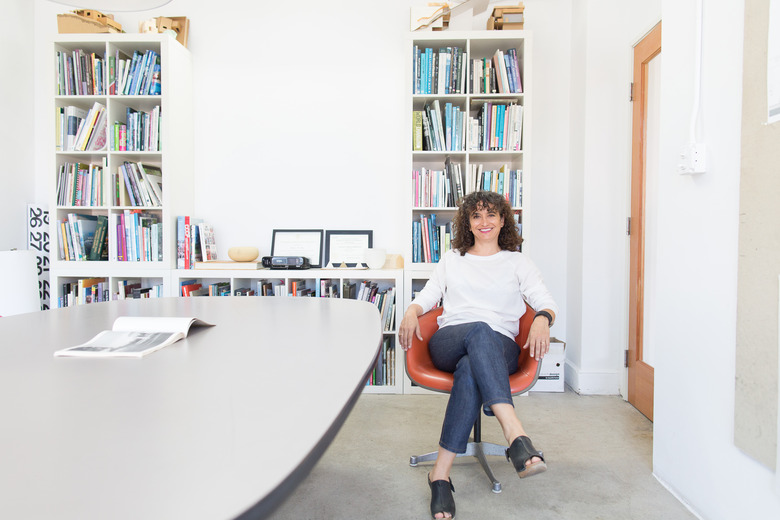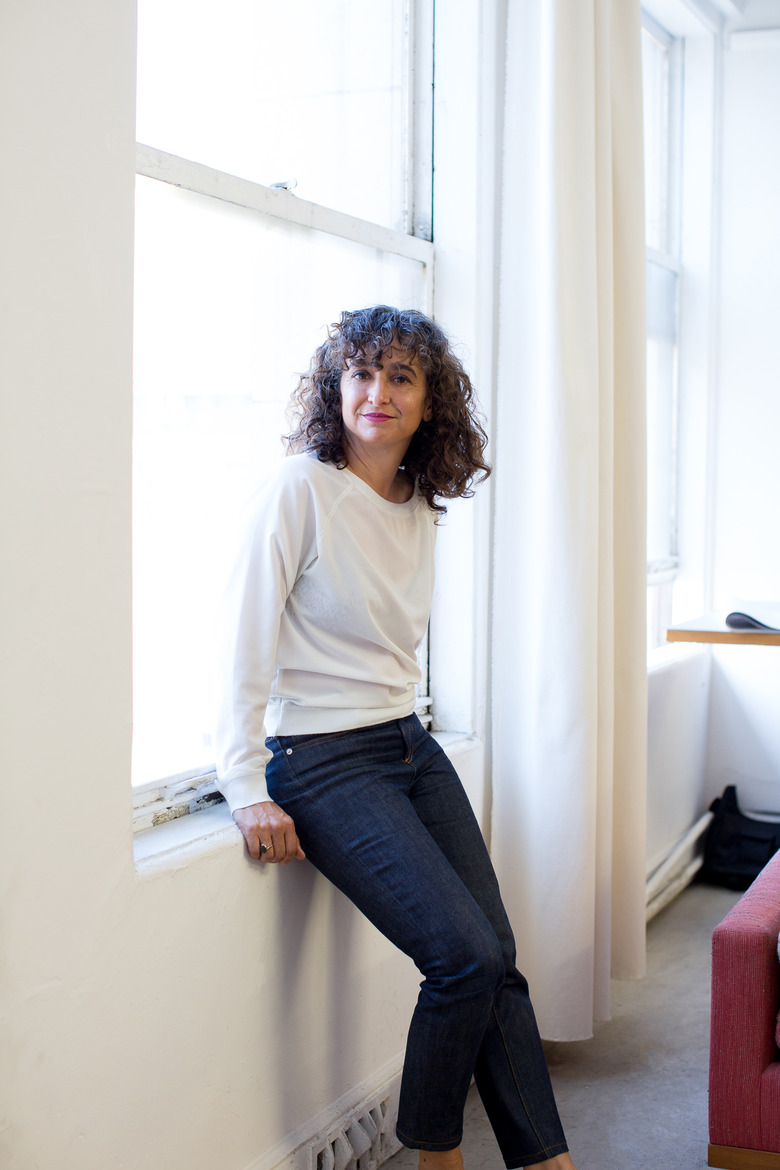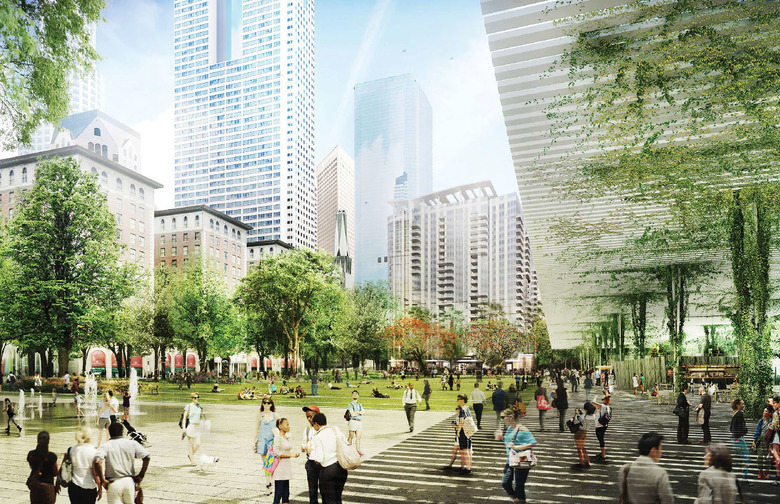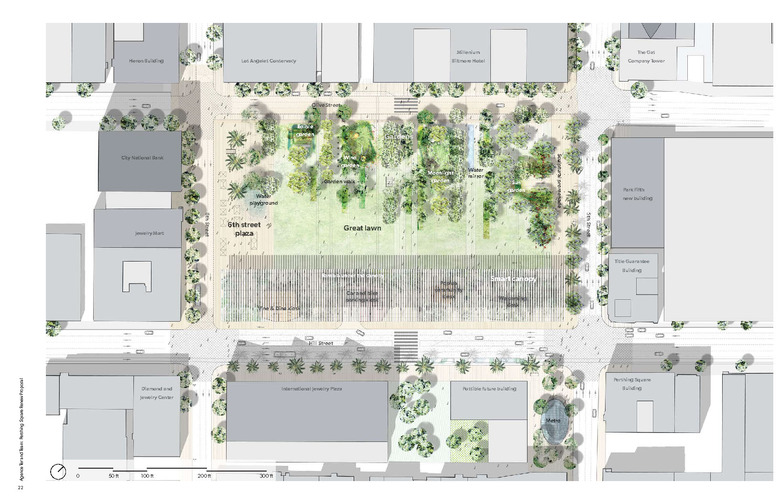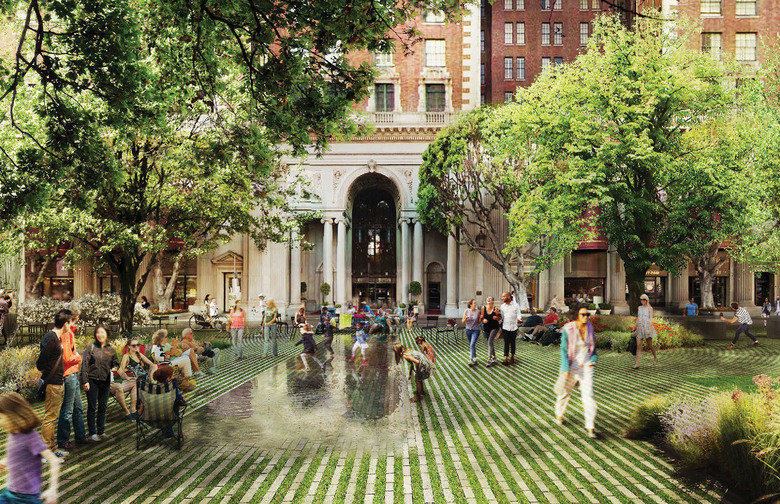Architect Rachel Allen Is Shaping The Future Of Downtown Los Angeles
Primary-colored construction cranes sprout up like weeds from the echoing downtown streets below principal architect Rachel Allen's office, signaling new development in the Old Bank Historic District of Los Angeles. From her perch on the eighth floor above South Broadway, she can observe the city's ambition for constant change.
"I'm interested in the never-satisfied feeling of Los Angeles, that's OK with me," she said.
Since developer Tom Gilmore took advantage of the adaptive reuse ordinance in 1999 — which transformed the city's Historic Core by allowing the conversion of older, run-down buildings into residential housing — downtown's residential population has more than doubled. About 20,000 people lived here in 2000, and today, more than 50,000 people do, and growing. But despite ever-evolving efforts to make the area a residential refuge, it seems to be stuck in a perpetual renaissance.
"It feels like it's been in a permanent state of trying," Allen mused, who's originally from San Francisco and studied at Princeton University. "Maybe that's just Los Angeles in general, like it's just always in this state of aspiration."
Since moving her namesake firm to this location from LA's Chinatown neighborhood four years ago, she's shared her workspace overlooking the turquoise Eastern Columbia Building with SALT Landscape Architects and Still Room Graphic Design. She calls them her "consistent collaborators," and it seems like that sense of cooperation is a concept Allen has just about mastered in her personal and professional lives.
"I grew up in a babysitting co-op," Allen noted, who has an eight-year-old daughter. Before becoming a mother, she worked at Gehry Partners and was the recipient of the prestigious Mercedes T. Bass Rome Prize in Architecture in 2002-2003. She's also a fellow of the American Academy in Rome. But parenting reminded Allen that "even people that have massive amounts of resources struggle with being happy families [in America]," so she started a co-op of her own to encourage other over-extended parents to rely on one another for help. She's hosted two public workshops about its community-building benefits, most recently at the Women's Center for Creative Work.
Knowing that cooperation was part of Allen's core ethos, her officemate Allen Compton of SALT approached her with his vision to assemble a dynamic team for the Pershing Square Renew soon after the international competition was announced in 2015. The non-profit collaboration between government, business leaders, and the local community sought to redesign a concrete-laden public square into a modern and adaptable outdoor space. It seemed as though Allen's collaborative spirit met the city's quest for change at the ideal moment.
"He's really good at identifying the right people for the right roles," Allen said of Compton. But it also helped that close proximity to the site made it easier to conceptualize their design. "A lot of our collaborators on the project are also downtown, so, I would say it's convenient [and] serendipitous," she said.
Not only did Compton cull the usual suspects for a project of this scale — like an architect, landscape architect, structural engineer, and so on — but he also recruited unusual collaborators to lend their unconventional expertise to the bustling site at the heart of the city. Aaron Paley, co-founder of the popular bicycling and open-streets festival CicLAvia, and Deborah Murphy, pedestrian advocate of LA Walks, were among those so-called unordinary participants.
"If you read the Pershing Square Renew request closely, it was clear that it was going to take these kinds of people to deliver what they were really asking for," Allen said. "It wasn't just a regular project, it's not just about the square. It's really about city fabric, and it's about repairing a place where the city fabric got broken."
Once the team was assembled, they gathered in the shared office above Broadway to begin their proposal. Each person was asked to engrave his or her raw ideas onto one large piece of trace paper in a group brainstorm — and right away, the team's chemistry was palpable.
"We rolled out a piece of trace and everyone drew," Allen remembered. "We were all really aware that something good was happening and we hadn't known each other very long."
The team hopes to rectify DTLA's nearly 150-year-old public park and bring it back down to earth, literally, by lowering the top level of a parking structure and create uninterrupted pedestrian access. With a focus on "radical flatness," her team's proposal redeems the square from its unpopular 1951 redesign, which visually severed the park from the city on all four sides with its raised walls and parking-lot access ramps. Even the more recent redesign of 1994, which added fountains, a tower, and citrus trees wasn't enough.
"I think it was intended to be an oasis but it didn't work," Allen said.
It was important to Allen to pay homage to the site while simultaneously attempting to maintain Pershing Square's history of public activism. Their proposal to flatten the park will return Pershing Square to grade, and in her view, return it back to people of Los Angeles.
In the end, the team beat three other finalists with a landslide majority of 1,300 votes, cast by the public, last year. Allen's firm will design and develop five buildings on the park's five-acre parcel. It will also complete an underground Metrohub alongside Paris-based Agence TER — the designated head of the team in the design competition — regular collaborator SALT Landscape Architects, and others.
"My approach in the studio has always been, 'If the UPS guy comes in and he has a great idea, we're going to use that,'" Allen said. "The best team allows everybody to bring their full selves to the table every morning."
Renderings of the proposal show a block-long "smart canopy" that will extend the full length of the park, providing ample shade for Allen's buildings and daytime activities like a farmers market. Themed gardens, like "edible" and "sun" will grow under shading trees, and a main lawn will be used for events. At night, the solar-paneled canopy will illuminate the square in collaboration with artist Leo Villareal and the Lighting Design Alliance.
"It feels like we're doing what we're meant to be doing, and it makes me not want to stop," Allen said.
In May 2017, two years after the Pershing Square Renew project was announced, the city's Board of Public Works granted a $1.5 million contract to conduct a feasibility analysis of the team's proposed design. Los Angeles will fully fund the costs, according to the results of that analysis. But for now, this is only the beginning of a renaissance that may finally see a finish.
"My husband and I wrote a family manifesto once on vacation, [and it said] something like, "Working hard on something you care about is the greatest gift you can give yourself,'" Allen said. "That's what Pershing Square feels like, it feels like an opportunity to do my thing."
Lauren McQuade is a writer and journalist based in the city she considers her protagonist, Los Angeles.
